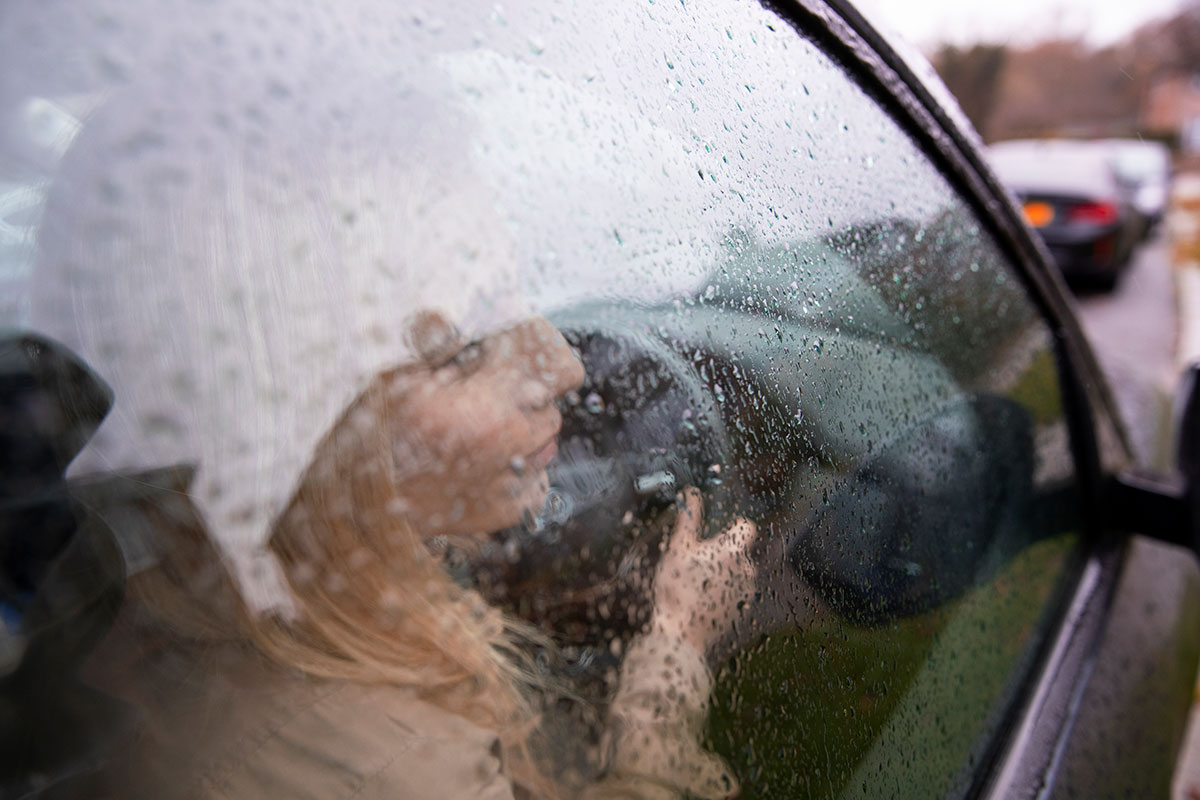Adverse Weather Alert: Protecting Vehicles During Heavy Rainfall
Driving during downpour – what should you do?
Heavy rain can reduce visibility to a few meters, and even the best windshield wipers may be overwhelmed by the volume of water. Overusing wipers at their highest setting for an extended period can also lead to motor burnout, leaving you unable to clear your windshield even in light rain.
The safest option during torrential rain is to pull over and wait it out. On highways or expressways, look for designated rest stops or service areas where you can park safely. The rains of this nature rarely last more than 10 to 20 minutes, so patience can go a long way toward avoiding a potential accident. Remember, it’s always better to arrive late than to take unnecessary risks that could lead to a collision or damage to your car.
Urban flooding
Heavy rain can have particularly dramatic consequences in urban areas where drainage systems are not equipped to handle large amounts of water in a short time. In case of flash flood, sometimes entire streets can be submerged because the municipal drainage systems can’t cope with the deluge, leaving parked cars flooded up to their roofs.
To avoid such situations it’s crucial to plan ahead, especially if you live in an area prone to urban flooding. Local knowledge is invaluable. Residents often know which parts of their city tend to flood during heavy rain. Avoid parking in these low-lying areas during storms, as water levels can rise quickly, reaching heights of 1.5 meters or more. For a car this is catastrophic, often leading to irreparable damage. Monitoring weather forecasts and staying informed about flood risks in your area can help you keep your vehicle safe.
Carelessness or vehicle defects
Not all water damage to vehicles comes from dramatic floods or torrential downpours. Everyday carelessness, e.g. leaving a car window or sunroof open during a rainstorm, can lead to significant interior water damage. This is especially problematic because even light rain can seep into electronic components, upholstery, and other sensitive areas.
Vehicle defects can also play a role. For instance a faulty sunroof seal might not seem like a big issue, but it can allow water to leak into the car during rain, causing damage to the interior and potentially shorting out electrical systems. Regular maintenance, such as inspecting seals and ensuring proper drainage around sunroofs and doors can prevent these issues. By addressing minor problems before they escalate, you can save yourself from costly repairs and protect your car from avoidable water damage.
Driving through deep puddles: never do it!
After heavy rain or flash floods it’s common to see photos or videos of cars attempting to drive through deep puddles or flooded streets. While this may seem like a quick solution to reach your destination, it’s one of the riskiest decisions a driver can make.
Modern cars, especially those not designed for off-road conditions, are highly vulnerable to water damage. Many vehicles have their air intake positioned low in the front, making it easy for water to be sucked into the engine. If this happens, it can cause hydrolock, which leads to catastrophic engine failure. Similarly critical sensors, connectors, and other electronics located near the base of the car can short out when exposed to water, causing malfunctions that are expensive to repair.
In addition to mechanical risks, water can seep into the vehicle’s body, joints, and panels, bringing dirt and debris that accelerate rust and corrosion. Even parts like exhaust systems and catalytic converters can suffer thermal shock from rapid cooling when submerged in cold water, leading to internal cracking and costly replacements.
For electric and hybrid vehicles the stakes are even higher. If water reaches the traction battery, it could cause severe damage or even start a fire. The risks far outweigh any potential time saved, so the safest course of action is always to avoid driving through deep water.
Flood preparedness and insurance
Floods are unpredictable and can happen anywhere especially during periods of heavy rainfall. Protecting your car from potential flood damage requires both preparation and financial safeguards.
The first line of defense is insuring your vehicle for flood damage. A comprehensive insurance policy (AC) often covers flood-related incidents, but it’s essential to review the policy’s terms carefully. Check the coverage details in the OWU (General Terms of Insurance) to confirm that flooding and water damage are explicitly included.
When heavy rain or flood warnings are issued, take proactive steps to safeguard your car. Avoid parking in low-lying areas, underground garages or near rivers where water levels could rise rapidly. Opt for elevated parking spots or areas known to remain dry during heavy rain. If you suspect flooding is imminent, consider relocating your car to a safer location even before the rain starts.
Finally, if you’re in the market for a used car, take extra precautions to ensure it hasn’t been previously flooded. Look for signs of water damage, such as rust in unusual places, lingering odors, or inconsistent wear on interior components. Checking the car’s history thoroughly is just as important as ensuring your driving licence is valid and up-to-date. Purchasing a car with a history of flooding can lead to hidden issues and ongoing repair costs.
Staying safe requires preparation and caution. Avoid driving in dangerous conditions, maintain your vehicle to minimize vulnerabilities, and ensure your insurance policy provides adequate coverage for water damage. When faced with severe weather, prioritize safety over convenience. Waiting out a storm or choosing a safer route is always better than risking your life or your car.
Being a responsible and informed driver not only protects your vehicle but also contributes to safer roads. With the right knowledge and precautions, you can navigate even the toughest conditions with confidence.

